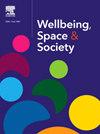在2019冠状病毒病大流行之前和期间,城市绿色空间类型在支持主观幸福感方面的作用发生了转变
IF 2.2
Q2 GEOGRAPHY
引用次数: 0
摘要
城市绿地为城市居民提供了宝贵的生态系统服务,在2019冠状病毒病大流行期间,它们的好处可能尤为重要。这项研究调查了在大流行之前和期间,使用各种类型的城市绿地与主观幸福感之间的关系。主观幸福感被定义为个人自我评估的身体、心理和社会幸福感。一项在线调查涉及居住在东京23个病房的1000名参与者,用于收集2019年(大流行前)和2020年(大流行期间)的绿色空间使用和主观幸福感数据。该调查的问题包括在往返30分钟步行距离内访问特定类型绿色空间的频率和目的。使用世卫组织开发的主观幸福感量表(SUBI)评估主观幸福感。在控制社会人口变量的情况下,使用Wilcoxon符号秩检验来检查绿地使用的变化,并使用有序逻辑回归来评估绿地使用与主观幸福感之间的关联。从2019年到2020年,城市绿地的使用率有所下降,这表明在疫情期间,人们访问绿地的机会有限或意愿降低。与主观幸福感改善相关的绿地在不同年份有所不同。在大流行期间,城市街边的绿地与更好的精神和社会福祉呈正相关。这样的空间可能是居民最熟悉和最容易接近的,尽管行动不便,但仍提供了与自然接触的日常机会。这些发现强调了附近绿地,特别是街道绿地在公共卫生危机期间为城市居民提供支持方面的关键作用,并强调了它们在促进城市环境福祉方面的持续重要性。本文章由计算机程序翻译,如有差异,请以英文原文为准。
Shifting roles of urban greenspace types in supporting subjective well-being before and during the COVID-19 pandemic
Urban greenspaces provide valuable ecosystem services to urban residents, and their benefits may have been especially important during the COVID-19 pandemic. This study examined associations between the use of various types of urban greenspaces and subjective well-being—defined as individuals’ self-assessed physical, mental, and social well-being—before and during the pandemic. An online survey, involving 1000 participants residing in Tokyo’s 23 wards, was used to collect data on greenspace use and subjective well-being in 2019 (pre-pandemic) and 2020 (during the pandemic). The survey included questions on the frequency and purpose of visits to specific types of greenspaces within a 30-minute round-trip walking distance from home. Subjective well-being was assessed using the WHO-developed Subjective Well-being Inventory (SUBI). Wilcoxon signed-rank tests were used to examine changes in greenspace use and ordinal logistic regression to assess associations between greenspace use and subjective well-being, controlling for socio-demographic variables. Urban greenspace use declined from 2019 to 2020, suggesting limited access or reduced willingness to visit greenspaces during the pandemic. Greenspaces associated with improved subjective well-being differed between years. During the pandemic, urban streetside greenspaces were positively associated with better mental and social well-being. Such spaces are likely the most familiar and accessible to residents, offering daily opportunities for nature contact despite mobility restrictions. These findings underscore the critical role of nearby greenspace, especially street greenery, in supporting urban residents during public health crises and highlight their ongoing importance in promoting well-being in urban environments.
求助全文
通过发布文献求助,成功后即可免费获取论文全文。
去求助
来源期刊

Wellbeing Space and Society
Social Sciences-Social Sciences (miscellaneous)
CiteScore
2.70
自引率
0.00%
发文量
46
审稿时长
124 days
 求助内容:
求助内容: 应助结果提醒方式:
应助结果提醒方式:


